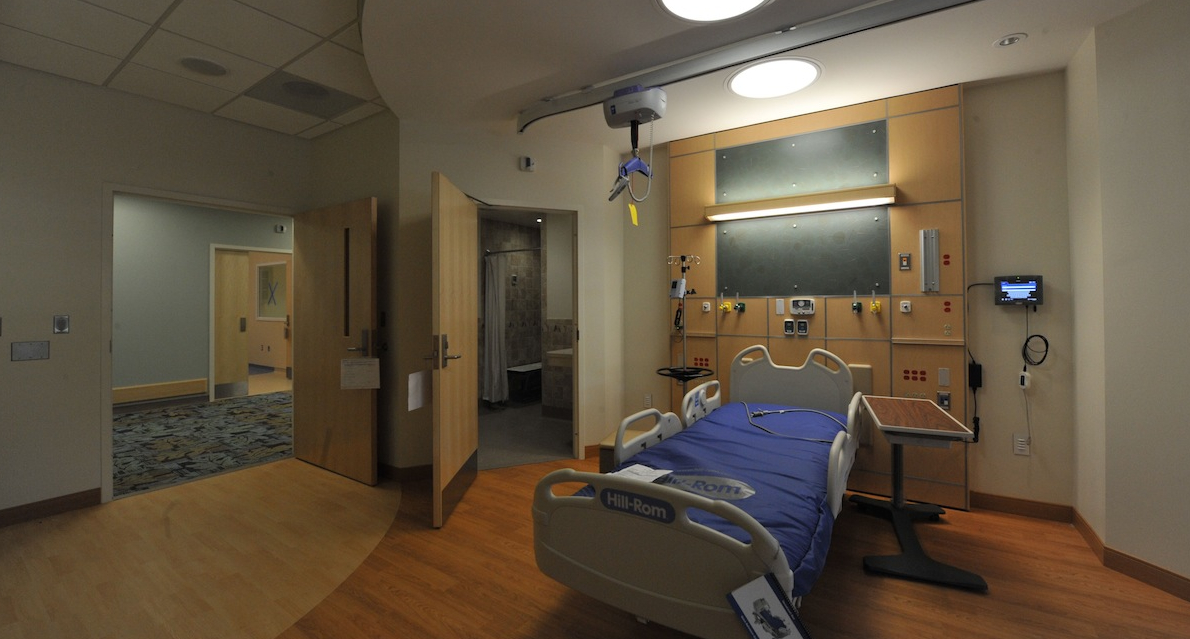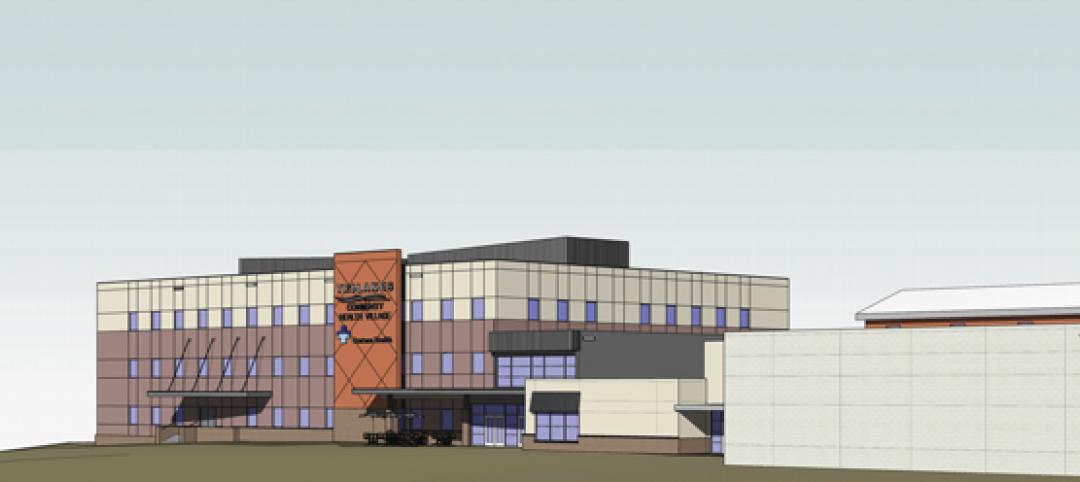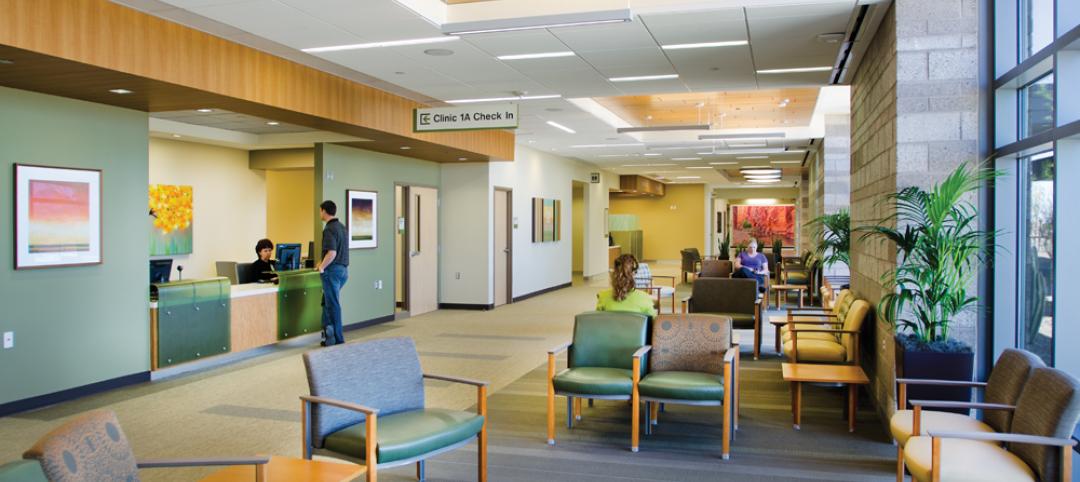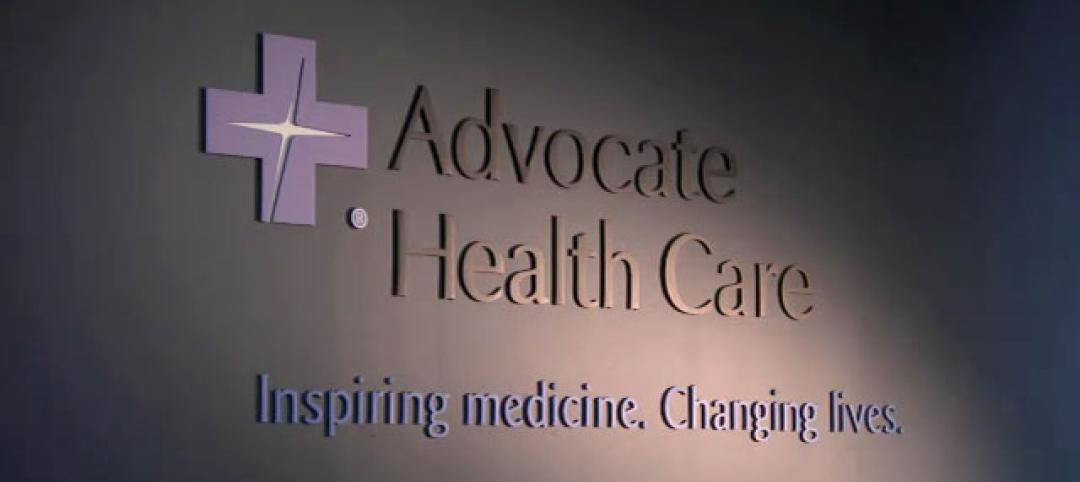With a constant drive for operational efficiencies and reduction of costs under an outcome-based healthcare environment, there are increasing pressures to ensure that sustainability initiatives are not only cost effective and provide a return on investment, but socially and environmentally responsible. Oregon Health & Science University (OHSU) is in the business of wellness—the desired outcome.
An effective sustainability program within a healthcare environment is the hub of the wheel that can produce several outcomes, such as workforce engagement, that are key drivers for higher reimbursements within the healthcare mission. It’s also the prioritization of these potential outcomes that can drive the creation of the desired operating vision.
This is a challenging balance within an organization that has competing yet synergistic missions of healthcare, research, and academics. With an established operating vision as the foundation, the following provides a road map for achieving a highly effective sustainability program within OHSU’s healthcare mission.
BUILDING DESIGN & SYSTEMS
There are several benefits and results noted within the OHSU Fast Facts related to the design and systems that reflect the dedication to sustainability within a wellness environment. However, within this innovative approach are noted challenges that required strategic solutions to achieve the desired cost savings and operational functionality while balancing the desire to achieve high occupant and patient satisfaction.
MEP System Design. When designing the MEP systems for a sustainable building a common approach that can achieve the desired energy savings is to “right size” the mechanical and electrical systems. This involves system design with only the necessary capacity to serve the programs anticipated at the time of construction. By doing so, you reduce the added energy consumption while lowering your initial capital investment.
However, facility operators, who have significant experience with managing healthcare facilities, immediately understand the challenges that “right sizing” may cause. Healthcare facilities are in a perpetual state of change, constantly evolving to meet the needs and demands of the industry. Therefore, it is impossible to know during the project design phase, the long-term changes that will impact the capacity of these systems. By “right sizing” systems, future expansion and renovation possibilities may be limited.
In addition, in many areas of healthcare, there is a minimum of N+1 redundancy to meet the basic life support and other regulatory requirements. Special attention must be paid to the types of systems and the control sequencing to help ensure that maximum efficiencies can still be attained. As a result, additional operational cost impacts may be incurred due to a higher level of sophisticated programming, engineer skill-set and training required ensuring limited system disruption and/or operational impacts.
Balancing Innovative System Technology. The highly innovative system technology resulted in a design that included many firsts for a healthcare facility of its size and complexity. One of the key innovations was to install a membrane bioreactor wastewater treatment system that processes all of the sanitary waste on-site. The system transforms the wastewater into a non-potable water source and harvests rainwater and excess groundwater to reduce the dependence on municipal water supply by an astonishing 60%.
However, this innovative system is not without challenges. A membrane bioreactor is a living machine, and with the use of high level sterilants (used for disinfecting medical equipment) there is potential for significant disruptions to the waste system. To mitigate this risk, a comprehensive chemical waste disposal policy was created in collaboration with OHSU’s Environmental Health & Radiation Safety team to ensure occupants were adequately trained on the process of using and disposing of chemicals down drains.
In addition, on-going education was implemented to account for employee turnover and new chemical introduction. Signs were also posted above sinks and drainage areas that have a higher potential for chemical use to address complacent use.
Despite the noted water savings, the upfront cost of installing the system was significant, but was slightly offset by the deferral of system development fees. Also, an on-site wastewater treatment system requires ongoing operational costs, including daily lab testing, special environmental permits, and labor to oversee the treatment plant. Although, there was considerable thought for the financial investment, OHSU also focused on balancing their decision to reduce the impact on the environment and remain socially responsible in regard to the community’s wastewater system. This is a balance of planet, people, and profit—known as the three P’s of sustainability.
There were innovative design elements within the central utility plant (CUP), as well. The CUP utilizes a fuel source to generate power and then transfers the heat from this process into a heating source. Five natural-gas-fueled microturbines can transfer up to 300kw power resulting in the capability of generating up to 30% of the facility’s electricity. The heat generated by the turbines provides space heating, domestic water heating, as well as heating for three on-site swimming pools.
With power relatively cheap in the Pacific Northwest, the challenge is to ensure that efficiency of the turbines is maximized based on the demand for heat while balancing the need for electrical production as outlined within the microturbine carbon impact graphic below. If the costs creep slightly higher, the environmental impact reduction over using traditional methods of heat production and purchasing utilities will be a deciding factor when evaluating the three P’s.
SUSTAINABLE OPERATIONS
Environmental Services (EVS) - Cleaning. The EVS vendor, GCA Services, is a national janitorial company that provides cleaning services at the building. The GCA cleaning team has established a green cleaning program that reflects use of green cleaning practices and products.
To further enhance energy savings, GCA implemented a day cleaning schedule in 2011. This proved to be challenging in a healthcare environment so the hours were adjusted to create staggered afternoon start times based on the operating hours of each respective clinic. This allowed occupants to get to know their cleaner while limiting disruptions within exam rooms and other patient care areas. The benefits of day cleaning are as follows:
• Energy savings and environmental consciousness
• Improved occupant satisfaction via enhanced 1:1 occupant-cleaner relationships and confidence
• Office space is visibly and routinely well cleaned
• Employee responsibility and security
• Less turnover and enhanced productivity
As a LEED Platinum building, the operations team strives to promote green practices throughout the building. The selection of cleaning supplies is also a key component to establishing a green cleaning program especially with balancing the limitations of chemical usage with the on-site wastewater treatment system.
Healthcare requires a higher level of disinfection to prevent cross contamination of blood borne pathogens. Non-green disinfectants are used in patient care areas while green approved products are used in non-patient care areas. There is a balance in knowing when certain products are needed while also maintaining the green standard with the LEED certification requirements.
Waste Management. A fully comprehensive recycling program was implemented upon occupancy of the building through collaboration with the City of Portland’s Bureau of Planning & Sustainability. The program includes recycling for paper, plastic, tin, aluminum, glass, cardboard, light bulbs, batteries and composting.
But, how do you ensure that you are achieving an effective waste management program within a very busy patient care environment? Simple, create a competition and promote the benefits and results to enhance buy-in and a high level of engagement.
To promote better recycling habits, CHH does an annual waste audit to highlight the amount of recyclables that are being put in the trash. The audit is conducted on a regular business day with normal volume of occupants and visitors. The project team physically separates the entire waste stream during the audit period into its component parts, measures each waste type by weight and tracks the amount of recyclables that were properly diverted from the waste stream via the CHH recycling program.
Tenants are notified of their results and their overall performance compared to the previous year and the best performance is recognized and awarded. With promotion of the results and continuing tenant education, OHSU hopes to see improved results year after year as it creates a competitive environment among the tenants.
STRATEGIC COMMUNICATIONS
Occupant education is a main driver for ongoing buy-in and consistent satisfaction and should constantly evolve through various communication paths to achieve a broadly engaged audience. The web portal at www.southwaterfrontcampus.com serves as a centralized intranet that provides resources such as the tenant handbook, access to the Computerized Maintenance Management System (CMMS), and other general tools and announcements.
Building-wide, tenant meetings are held on a quarterly basis to provide general updates to department managers and service line contacts for the campus. This collaborative approach ensures there is a strong foundation for the program delivery as well as OHSU’s contribution to setting a high performance standard and results. A quarterly newsletter is distributed to tenants in the weeks following the tenant meeting, providing highlights on all information resented. It is the combination of collaborative meetings coupled with follow-up visual information via several communication paths that has contributed to a high level of occupant engagement.
In addition, an annual sustainability report is provided to OHSU and building occupants providing a visual synopsis of how the platform and LEED framework contribute to the overall program results and return on investment to reinforce dedication to the sustainable strategies implemented under the operating vision.
Surveys are also deployed to occupants annually, as well as via the CMMS throughout the year to identify areas of success and improvement. The high level of engagement is apparent within a busy healthcare environment with a high level of survey participation over the past nine years with a department response rate above 64% versus an industry-standard that is typically around only 20%. In addition to occupant engagement, you must have the right tools to deploy an effective program. A detailed playbook that defines program roles and responsibilities amongst team members will ensure consistent implementation and outcomes. The playbook serves as an invaluable training guide for new hire onboarding, as well as a blueprint for future growth.
Achieving sustainability in a healthcare environment can be challenging. A solutions oriented approach for developing systems, implementing technology and investing in team resources will aid in building the foundation necessary to deliver the desired results.
About the Author: Dyann Hamilton is an Alliance Director at CBRE with over 20 years of commercial real estate experience. She is responsible for on-site facilities and project management services, lease administration and accounting for over 1 million square feet of real estate in the South Water-front District for Oregon Health & Science University, Portland State University and Oregon State University. Her portfolio includes healthcare, research and academic use within LEED-Platinum Certified facilities.
Related Stories
| Sep 19, 2013
Roof renovation tips: Making the choice between overlayment and tear-off
When embarking upon a roofing renovation project, one of the first decisions for the Building Team is whether to tear off and replace the existing roof or to overlay the new roof right on top of the old one. Roofing experts offer guidance on making this assessment.
| Sep 17, 2013
Healthcare project will merge outpatient clinic with YMCA to promote wellness and prevention
Penrose-St. Francis Health Services and the YMCA of the Pikes Peak Region announce collaboration, along with developer The Boldt Company, to create next-generation wellness facility.
| Sep 16, 2013
Study analyzes effectiveness of reflective ceilings
Engineers at Brinjac quantify the illuminance and energy consumption levels achieved by increasing the ceiling’s light reflectance.
| Sep 11, 2013
BUILDINGChicago eShow Daily – Day 3 coverage
Day 3 coverage of the BUILDINGChicago/Greening the Heartland conference and expo, taking place this week at the Holiday Inn Chicago Mart Plaza.
| Sep 10, 2013
The new medical office building: 7 things to know about today’s outpatient clinic
Regulatory pressures, economic constraints, and emerging technologies are transforming healthcare. Learn how Building Teams are responding with efficient, appealing, boundary-blurring outpatient buildings.
| Sep 10, 2013
BUILDINGChicago eShow Daily – Day 2 coverage
The BD+C editorial team brings you this real-time coverage of day 2 of the BUILDINGChicago/Greening the Heartland conference and expo taking place this week at the Holiday Inn Chicago Mart Plaza.
| Sep 4, 2013
Augmented reality goes mainstream: 12 applications for design and construction firms
Thanks to inexpensive mobile devices and increasingly advanced software apps, Building Teams are finally able to bring their BIM models to life on the job site.
| Sep 4, 2013
Smart building technology: Talking results at the BUILDINGChicago/ Greening the Heartland show
Recent advancements in technology are allowing owners to connect with facilities as never before, leveraging existing automation systems to achieve cost-effective energy improvements. This BUILDINGChicago presentation will feature Procter & Gamble’s smart building management program.
| Aug 30, 2013
A new approach to post-occupancy evaluations
As a growing number of healthcare institutions become more customer-focused, post-occupancy evaluations (POE) are playing a bigger role in new construction and renovation projects. Advocate Health Care is among the healthcare organizations to institute a detailed post-occupancy assessment process for its projects.
| Aug 26, 2013
What you missed last week: Architecture billings up again; record year for hotel renovations; nation's most expensive real estate markets
BD+C's roundup of the top construction market news for the week of August 18 includes the latest architecture billings index from AIA and a BOMA study on the nation's most and least expensive commercial real estate markets.

















